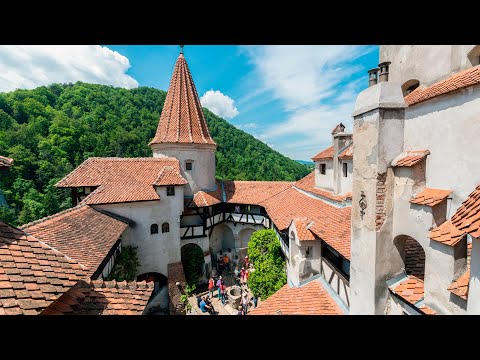
Nestled in the southeastern part of Central Europe, Romania offers an enriching blend of natural landscapes, diverse cultural heritage, and a rich history that captivates visitors from around the globe. From the legendary landscapes of Transylvania to the vibrant streets of Bucharest, Romania is a country that boasts an array of attractions catering to all tastes and interests.
## Historical and Cultural Heritage
Romania’s history is deeply embedded in its landmarks and architecture. The country’s past is dominated by various peoples and empires – from Roman settlers who gave Romania its name to Hungarians, Ottomans, and the Austro-Hungarian Empire. This complex history is reflected in its architecture, ranging from medieval fortresses to ornate churches and monasteries.
### Transylvania: The Heart of Romanian Lore
Perhaps no other region captures the imagination quite like Transylvania. Known worldwide for its connections with the Dracula myth, inspired by Bram Stoker’s famous novel based on Vlad the Impaler (Vlad III Dracula), Transylvania is also home to some of Europe’s best-preserved medieval towns. Places like Sighișoara, Brașov, and Cluj-Napoca offer a glimpse into this rich past with their Gothic-style black churches, cobbled streets, and towering citadels.
### Bucharest: The Little Paris
The capital city Bucharest earned the nickname “Little Paris” in the early 20th century due to its elegant architecture and vibrant cultural life. The city’s impressive landmarks include the Palace of Parliament – one of the largest administrative buildings in the world – along with traditional bohemian neighborhoods like Lipscani bustling with cafes, bars, and art galleries.
## Natural Wonders
Romania’s landscape includes mountains, hills, plains divided by rivers flowing into five different seas via tributaries emptying into two main rivers – Danube River being one prominent example. The Carpathian Mountains stretch across much of central Romania offering scenic hiking trails and ski resorts like Sinaia where Peleș Castle stands as a masterpiece of German Renaissance architecture.
### The Danube Delta: A UNESCO World Heritage Site
One must not overlook Romania’s natural treasures such as the Danube Delta – one of Europe’s most biodiverse regions hosting countless species of birds fish mammals reptiles during migrations each year attracting bird watchers nature enthusiasts alike seeking tranquility amidst unspoiled nature.
## Romanian Traditions and Cuisine
Romanian culture is a product of its geography and historical evolution; it represents a confluence where Eastern European meets Western traditions influenced by Greek Romans Slavic cultures among others resulting in unique customs dances music folk arts admired worldwide today especially through festivities showing colorful costumes lively dances traditional music instruments played during numerous festivals celebrated throughout year emphasizing rural life roots community values.
Cuisine further mirrors this diversity meals predominantly feature meats like pork alongside vegetables grains dairy products creating hearty dishes such as sarmale (cabbage rolls) mămăligă (polenta) cozonac (sweet bread). Each regional cuisine has its distinctive flavors ensuring palate adventure anyone daring enough explore beyond conventional offerings found elsewhere globally thus making food integral part exploring Romanian culture itself.
## Conclusion
Romania remains somewhat off beaten path compared more popular European destinations which adds appeal those looking discover new experiences without overwhelming crowds found elsewhere continent whether you’re interested exploring gothic tales woven throughout Transylvania walking through bustling streets Bucharest or enjoying tranquil moments watching sunset over Danube Delta each corner this fascinating country promises something unique leaving lasting impressions visitors willing delve deep into what makes it truly special place visit explore cherish forever.
